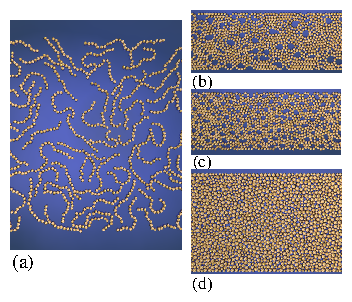 Figure 3:
(a) Scaling of pressure vs density,
P Mb2.9 vs ϕ−ϕc close to the jamming transition for
chains of length
Mb=6 (black down triangle),
8 (big up triangle),
10 (black lozenge),
16 (square),
and 24 (•).
(b)
Scaling of (Z−Zc) Mb vs ϕ−ϕc for chains of length
Mb=6, 8, 10, 16, and 24, with the same symbols as in panel (a).
Figure 3:
(a) Scaling of pressure vs density,
P Mb2.9 vs ϕ−ϕc close to the jamming transition for
chains of length
Mb=6 (black down triangle),
8 (big up triangle),
10 (black lozenge),
16 (square),
and 24 (•).
(b)
Scaling of (Z−Zc) Mb vs ϕ−ϕc for chains of length
Mb=6, 8, 10, 16, and 24, with the same symbols as in panel (a).
|
